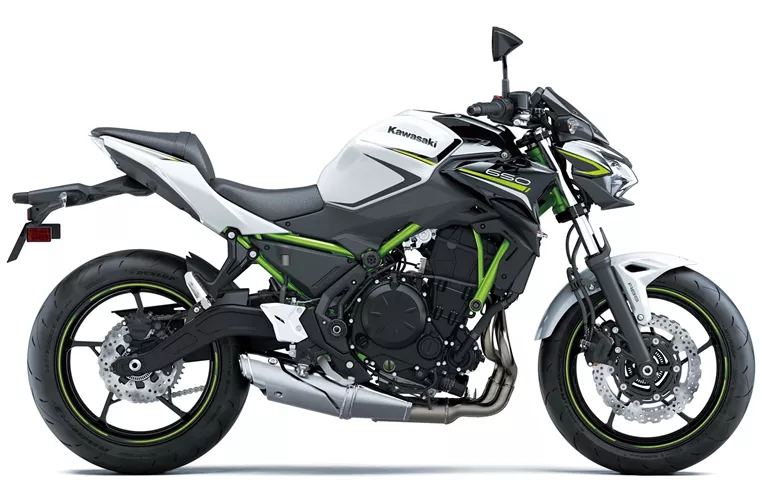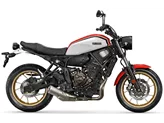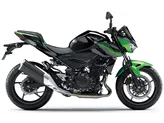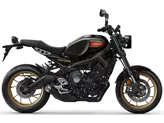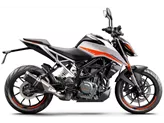Yamaha XSR700 2016 vs. Kawasaki Z650 2020

Yamaha XSR700 2016
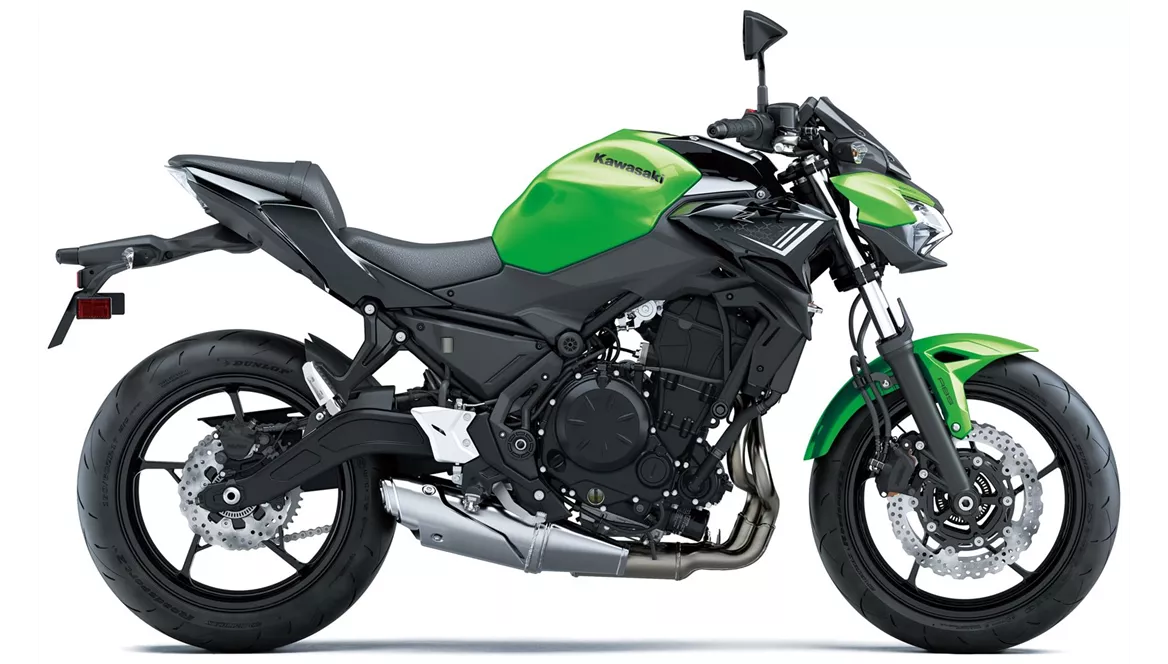
Kawasaki Z650 2020
Visão geral - Yamaha XSR700 2016 vs Kawasaki Z650 2020
The Yamaha XSR700 2016 and the Kawasaki Z650 2020 are both naked bikes with similar technical specifications. Both models have an inline engine with 2 cylinders and liquid cooling. They also have fuel injection systems and similar displacements, with the XSR700 having a displacement of 689cc and the Z650 having a displacement of 649cc.
In terms of power, the XSR700 has a slight advantage with 75 horsepower compared to the Z650's 68.2 horsepower. However, the difference is not significant and both bikes offer a decent amount of power for their class.
In terms of torque, the XSR700 has a slight advantage again with 68 Nm compared to the Z650's 65.7 Nm. Again, the difference is not significant and both bikes offer good torque for their class.
Both bikes have similar suspension setups, with telescopic forks in the front and a swingarm with a monoshock in the rear. This provides a good balance between comfort and sportiness.

Yamaha XSR700 2016
In terms of braking, both bikes have dual disc brakes in the front, but the Z650 has slightly larger discs with a diameter of 300mm compared to the XSR700's 282mm discs. The Z650 also has dual piston calipers, which may provide slightly better braking performance.
Both bikes have ABS as a standard feature, which enhances safety during braking.
In terms of dimensions, the Z650 has a slightly longer wheelbase with 1410mm compared to the XSR700's 1405mm. The seat height of the Z650 is also lower at 790mm compared to the XSR700's 815mm, making it more suitable for shorter riders.
The weight of the bikes is similar, with the XSR700 weighing 186kg (with ABS) and the Z650 weighing 187.1kg (with ABS).
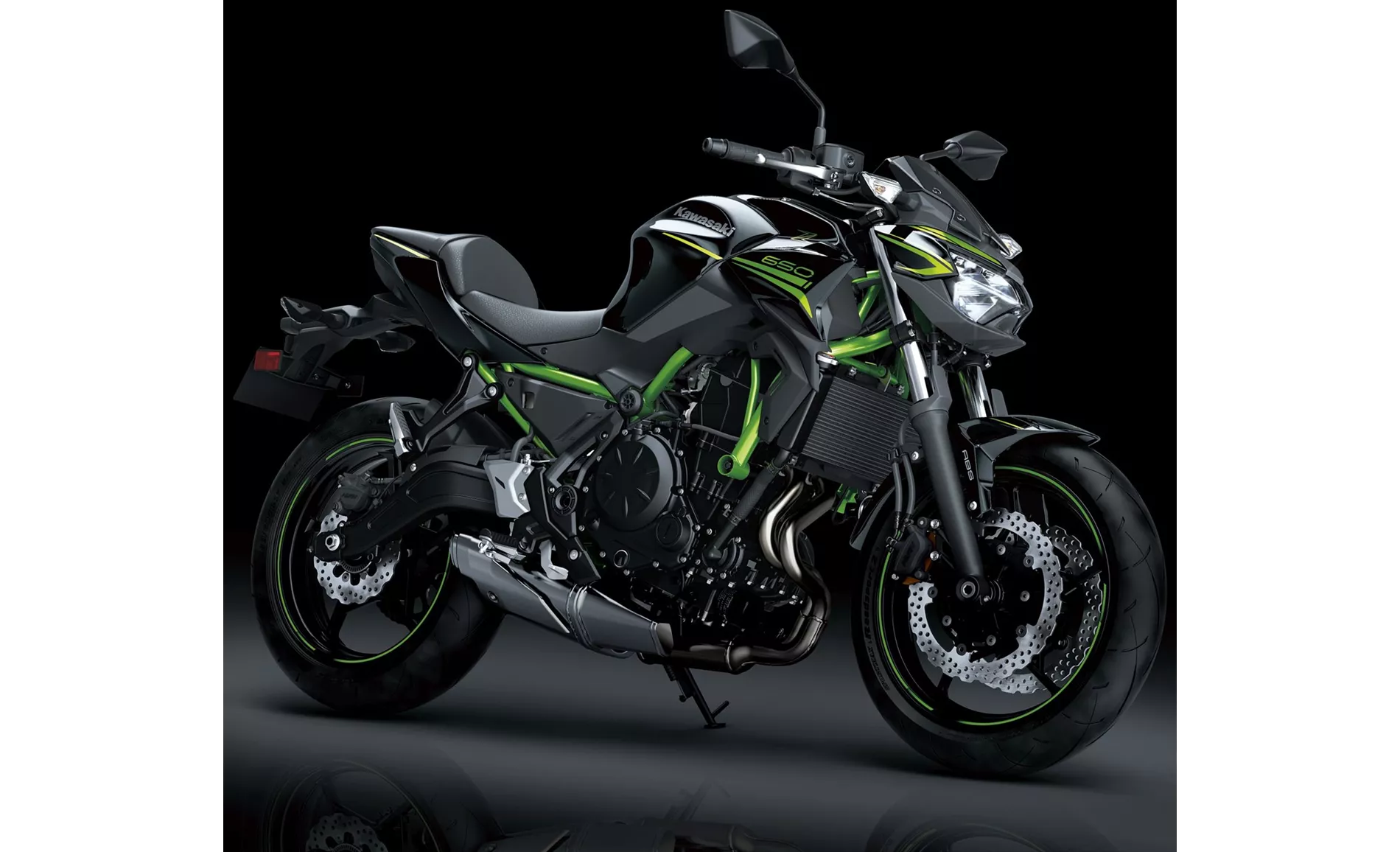
Kawasaki Z650 2020
The fuel tank capacity of the Z650 is slightly larger at 15 liters compared to the XSR700's 14 liters.
In terms of strengths, the XSR700 is praised for its smooth engine, direct transmission, easy handling, and good build quality. On the other hand, the Z650 is praised for its powerful twin-cylinder engine, aggressive intake noise, compact dimensions, low seat height, stable chassis, TFT screen with connectivity, and mature appearance.
In terms of weaknesses, the XSR700 is criticized for having a chassis that is too soft and requiring some time to get used to the seating position. The Z650 has been noted to have a point of pressure on the front brake, which may be uncomfortable for some riders, and it may not be as comfortable for taller riders. Additionally, the Rideology application on the Z650 is not considered to be 100% sophisticated.
Overall, both the Yamaha XSR700 2016 and the Kawasaki Z650 2020 are solid choices in the naked bike segment, offering good performance, handling, and features. The choice between the two will ultimately come down to personal preference and priorities.
Especificações técnicas Yamaha XSR700 2016 em comparação com Kawasaki Z650 2020
Prós e contras em comparação
Prós e contras em comparação
Yamaha XSR700 2016

Se quiser uma moto de entrada que o deixe satisfeito durante muito tempo, mas que ao mesmo tempo tenha um visual retro, não há como evitar a Yamaha XSR 700. Com a MT-07 como base técnica, está a comprar aquela que é provavelmente a moto para principiantes mais popular do momento - apenas com uma aparência diferente. O maior triunfo da XSR 700 é o seu incrivelmente elástico motor de dois cilindros em linha, que não sobrecarrega os principiantes nem aborrece os motociclistas experientes. A resposta do acelerador é agradavelmente direta e a potência desenvolve-se de forma muito harmoniosa, nunca haverá aqui um momento de "oops". No entanto, a XSR 700 deve ser vista como uma moto de cruzeiro descontraída e não como uma moto desportiva. O chassis oscila muito facilmente quando conduzido a alta velocidade e traz incerteza ao veículo. Os condutores experientes vão achar que é fácil lidar com isso, mas um principiante pode sentir-se sobrecarregado.
Kawasaki Z650 2020
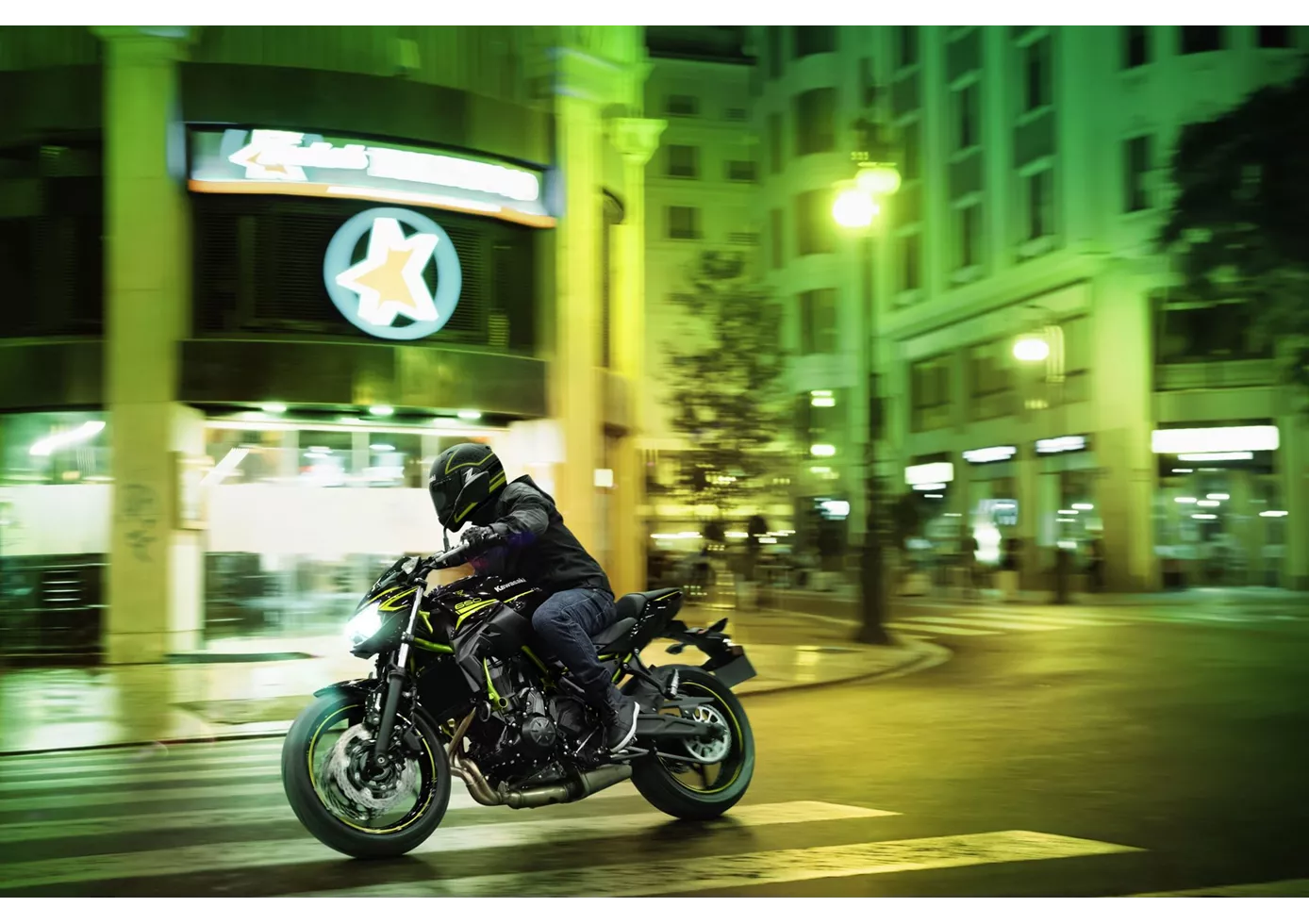
É simplesmente maravilhoso o que a Kawasaki juntou num pacote completo com a nova Z650. Os componentes técnicos podem não impressionar individualmente, mas em conjunto formam uma mota agradavelmente neutra que todos irão apreciar. Não há idiossincrasias desagradáveis - simplesmente uma mota naked que funciona muito bem em estradas rurais sinuosas. Claro que o ecrã TFT, que não encontramos na concorrência neste momento, é uma mais-valia, tal como o aspeto adulto, que está fortemente orientado para os modelos Z maiores. Apenas o ponto de pressão do travão dianteiro poderia ter sido mais claramente definido - mas não se pode ter tudo nesta gama de preços.
Comparação de preços Preço médio de mercado Yamaha XSR700 vs Kawasaki Z650
There are a few key differences between a Yamaha XSR700 2016 and a Kawasaki Z650 2020. In terms of price, the actual average price of a Yamaha XSR700 2016 is about 7% higher. A Yamaha XSR700 2016 experiences a loss of 120 EUR in one year of ownership. This is offset by a loss of 40 EUR for a Kawasaki Z650 2020. Compared to Kawasaki Z650 2020 there are less Yamaha XSR700 2016 bikes available on the 1000PS.de Marketplace, specifically 9 compared to 21. It takes less time to sell a Kawasaki Z650 with 80 days compared to 85 days for the Yamaha XSR700. Since model year 2015 1000PS.de editors have written 26 reviews for the Yamaha XSR700 and 31 reviews for the Kawasaki Z650 since model year 2017. The first review for the Yamaha XSR700 was published on 22/07/2015 and now has more than 13 700 views. This compares to more than 25 000 views for the first review on Kawasaki Z650 published on 08/11/2016.

